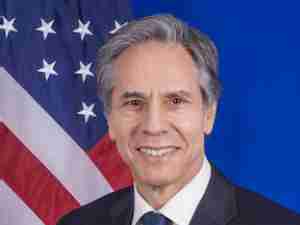Barletta Statement on “Building a 21st Century Infrastructure for America” hearing
posted by AJOT | Sep 13 2017 at 12:09 PM | International Trade
Chairman Lou Barletta (R-PA)
Subcommittee on Economic Development, Public Buildings and Emergency Management
Hearing on “Building a 21st Century Infrastructure for America: Economic Development Stakeholders’ Perspectives”
September 13, 2017
Opening Statement
(Remarks as Prepared)
The Subcommittee will come to order.
The purpose of this hearing is to examine how we build a 21st Century Infrastructure for America in the context of economic development and disaster resilience.
First, as the Chairman of the Subcommittee with oversight over FEMA, we are working closely with the Members, States, and communities devastated by Hurricanes Harvey and Irma.
Our thoughts and prayers go out to the families and communities impacted.
I also want to acknowledge the brave and tireless work of the thousands of first responders, volunteers and members of the federal family that are helping respond to these catastrophic storms and pave the way for recovery.
I have seen firsthand how disasters can upend and devastate communities – the loss of homes, jobs, cherished possessions and, most tragically, lives.
We must work to ensure the States and communities impacted by these Hurricanes recover, and recover quickly.
And, in recovering, it becomes even more critical to ensure that we rebuild smarter and better.
It will not serve anyone well if we simply rebuild without incorporating mitigation measures that will minimize the impact of future disasters.
Investment in mitigation ensures the wise investment of taxpayer dollars because mitigation strengthens infrastructure, saves lives and reduces future disaster costs and losses.
Today, I hope we can find ways to ensure mitigation is built into our building and rebuilding process so we can save lives and property.
Critical in the recovery following a disaster is ensuring businesses and jobs return.
Agencies like the Economic Development Administration or EDA provide critical assistance to facilitate economic recovery following a disaster.
For example, in the district I represent, many businesses were impacted by flood waters during Tropical Storm Lee, threatening businesses and hundreds of jobs.
EDA’s investment of $15 million for flood control systems in Bloomsburg, Pennsylvania, leveraged an additional $10 million in private investment and saved nearly 900 jobs.
Today, we also want to explore how we can strengthen economic development programs to more effectively leverage private investment in infrastructure and create jobs.
We also want to examine how we can build and rebuild better to save lives, strengthen our communities, and reduce disaster costs and losses.
But, the missions of agencies like EDA and the Appalachian Regional Commission or ARC extend well beyond natural disasters.
Federal economic development programs often provide the last piece of the puzzle distressed communities need to attract private investment, businesses, and jobs.
For example, ARC’s Partnerships for Opportunity and Workforce and Economic Revitalization, also known as the POWER initiative, invested $9 million in Pennsylvania that will attract $33 million in private investment and create over 600 jobs in coal-impacted communities.
The grants from these agencies are usually tied to specific outcomes that increase their impact in distressed communities and ensure jobs are actually created and other goals achieved.
I look forward to hearing from our witnesses how these programs work and what proposals exist to improve upon them.
In rebuilding our Nation’s infrastructure, we cannot do it alone. It takes all levels of government and the private sector.
How do we maximize these economic development and disaster response programs to ensure good outcomes and quick recovery, while creating lasting jobs and economic growth?
I am sure our witnesses today will help us answer these questions.
Thank you for being here.










